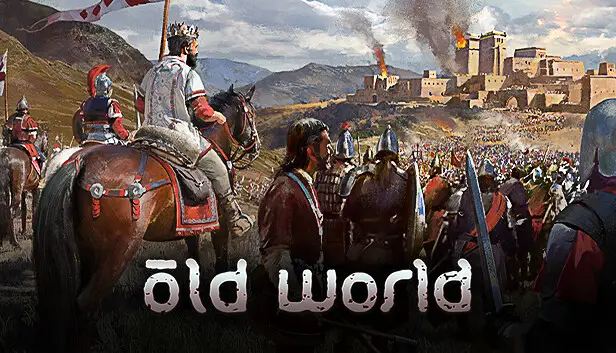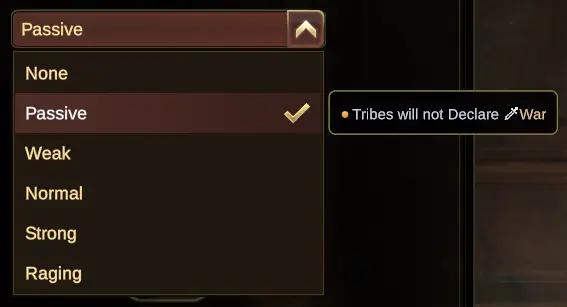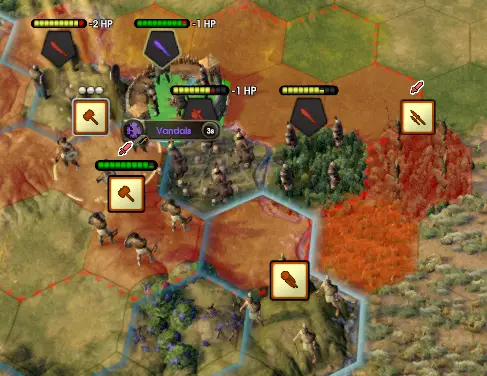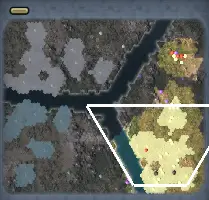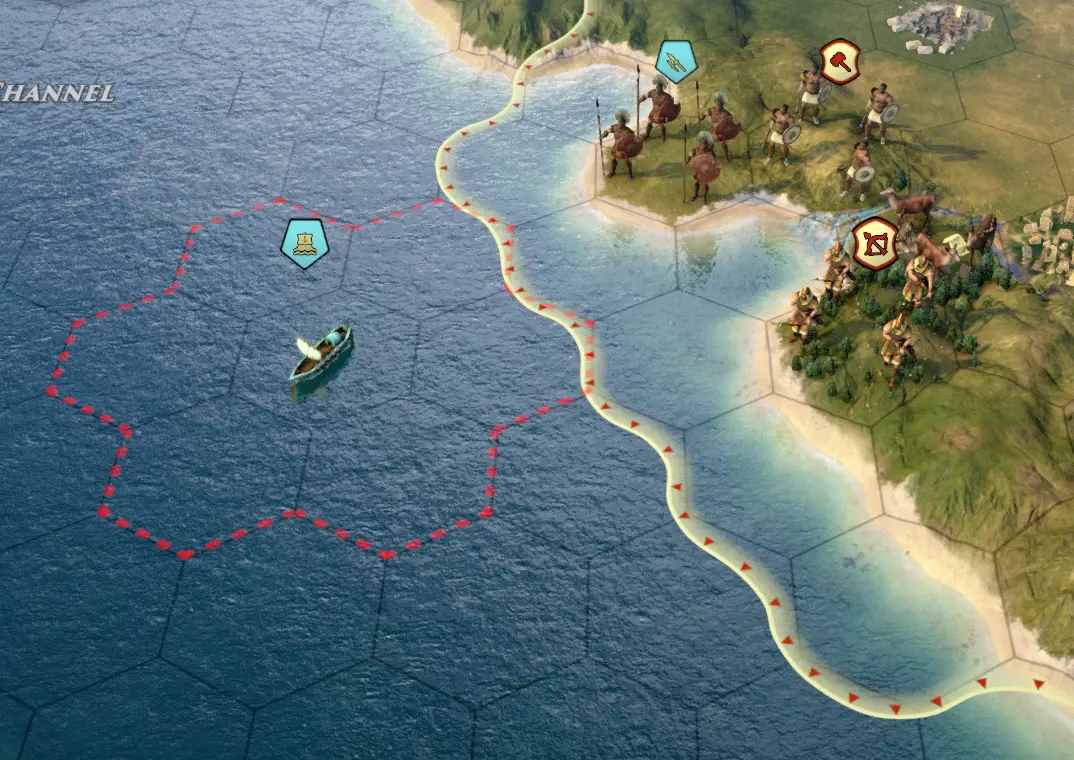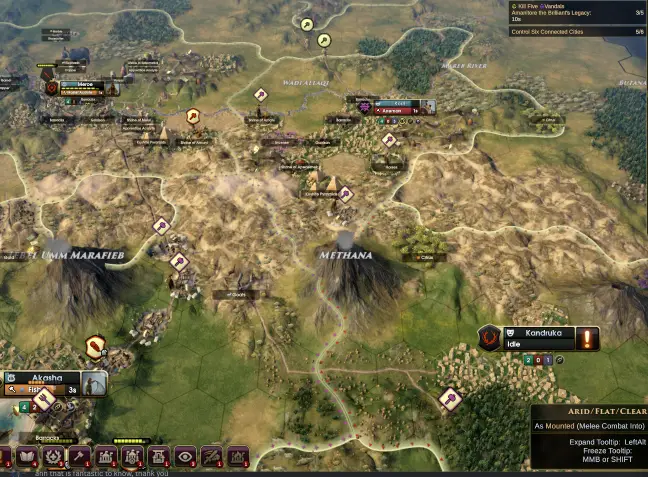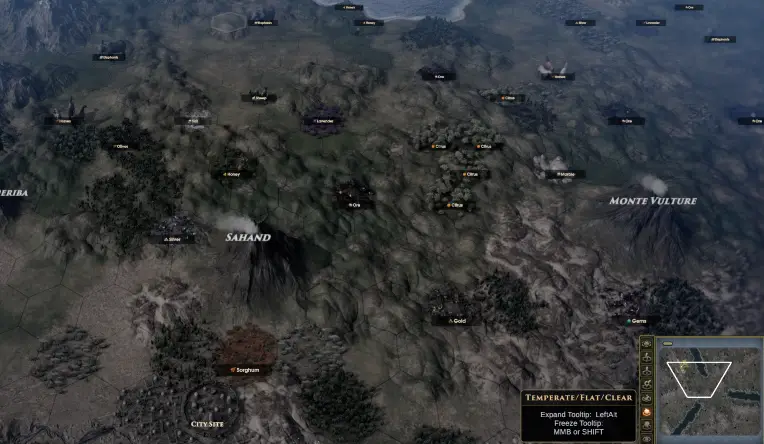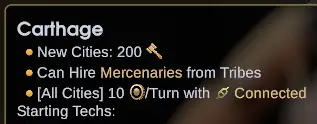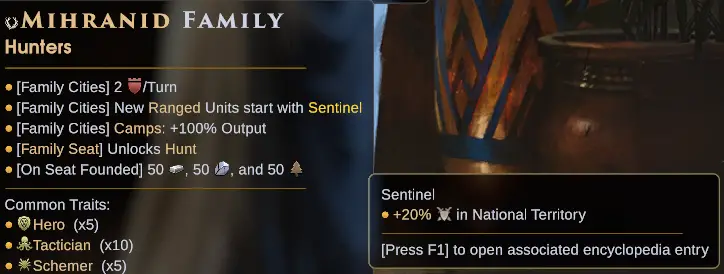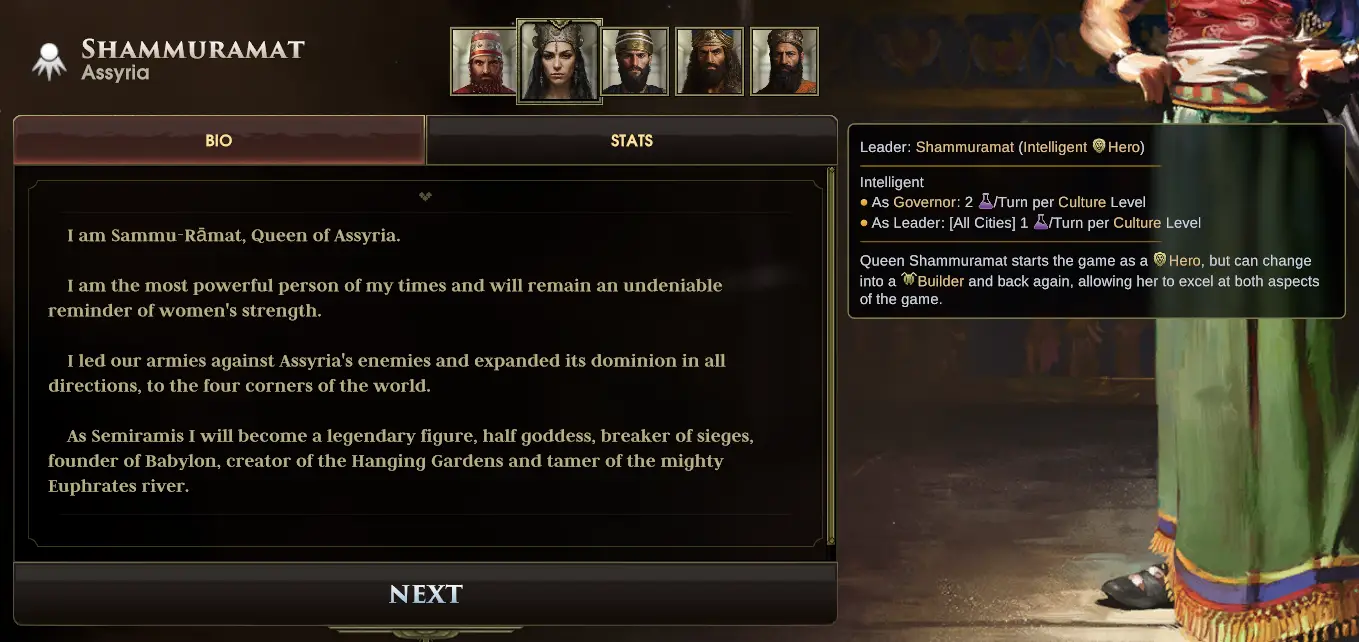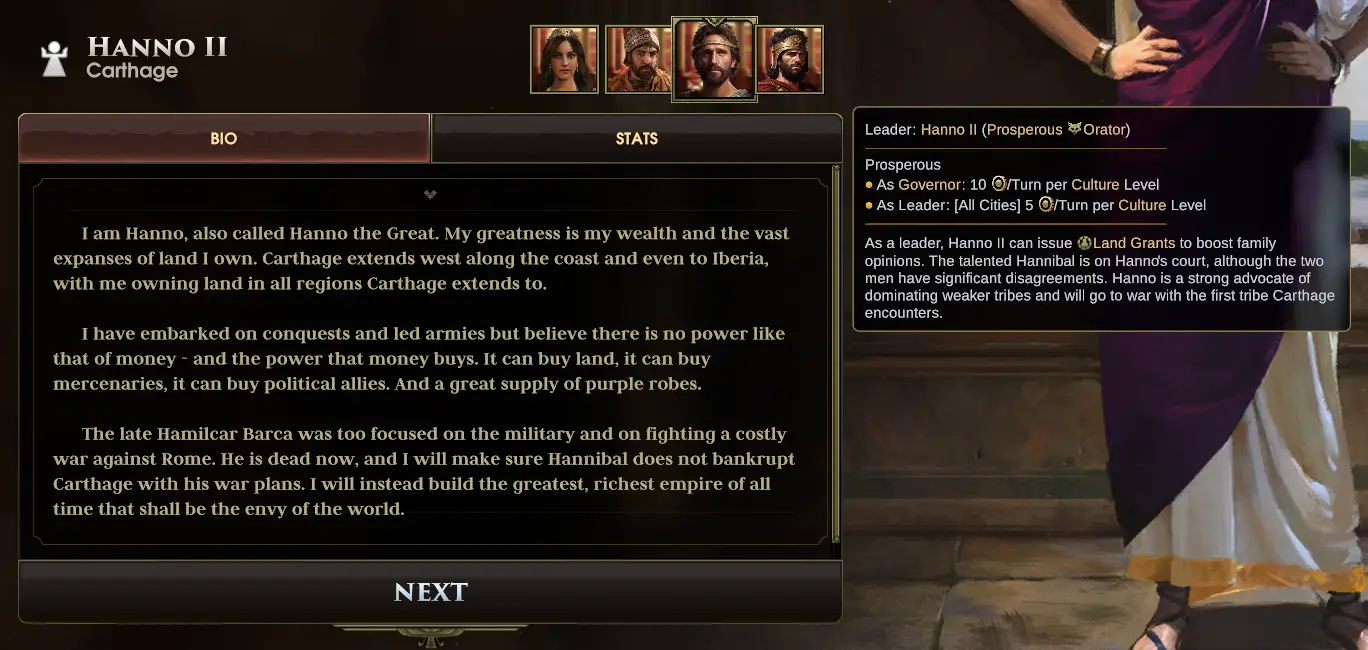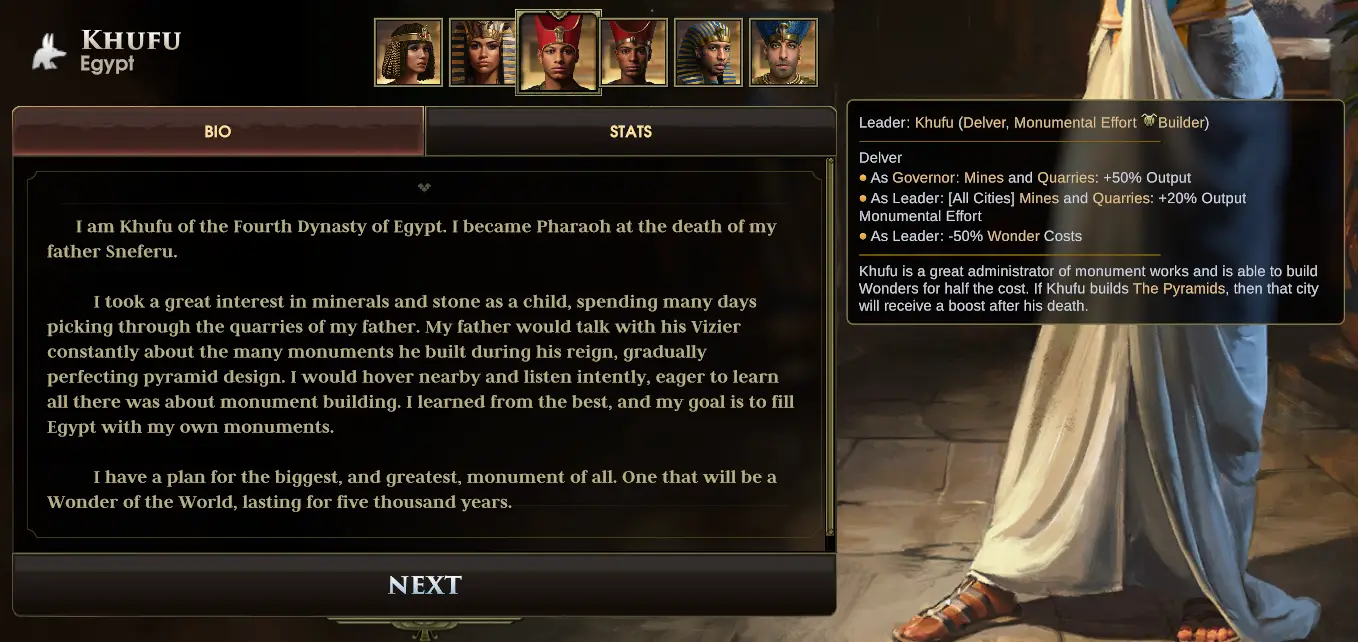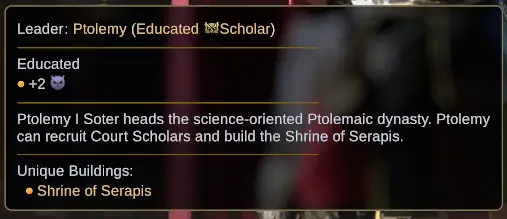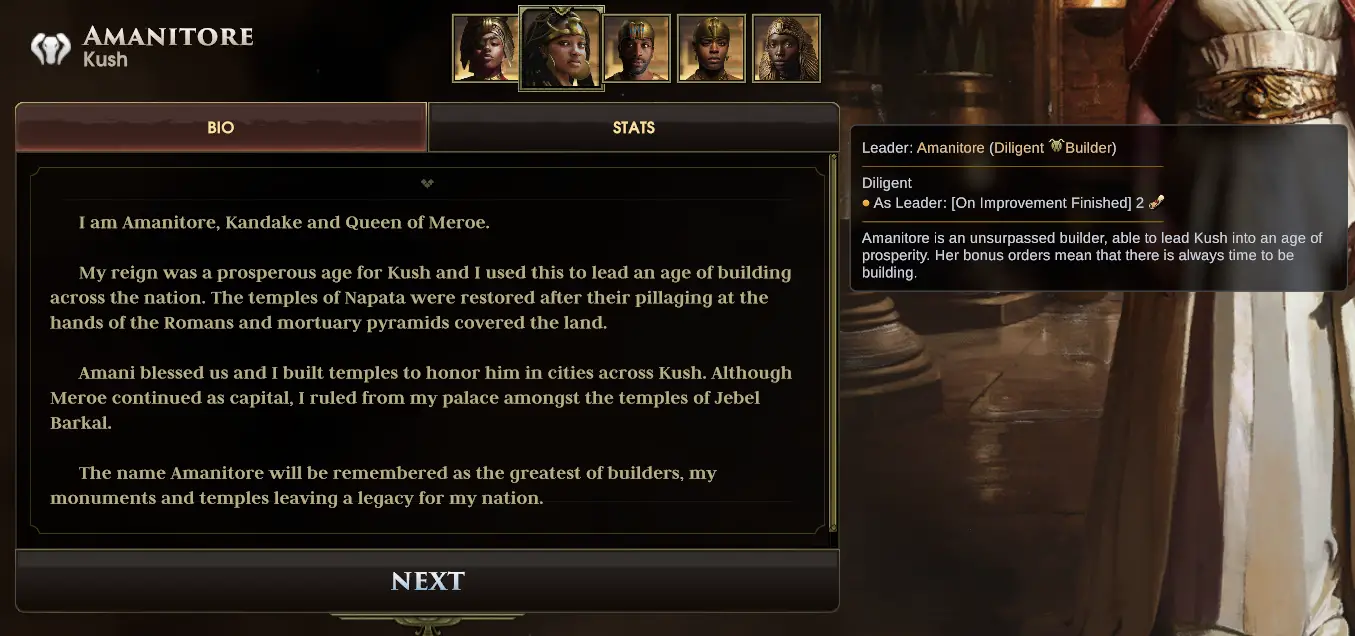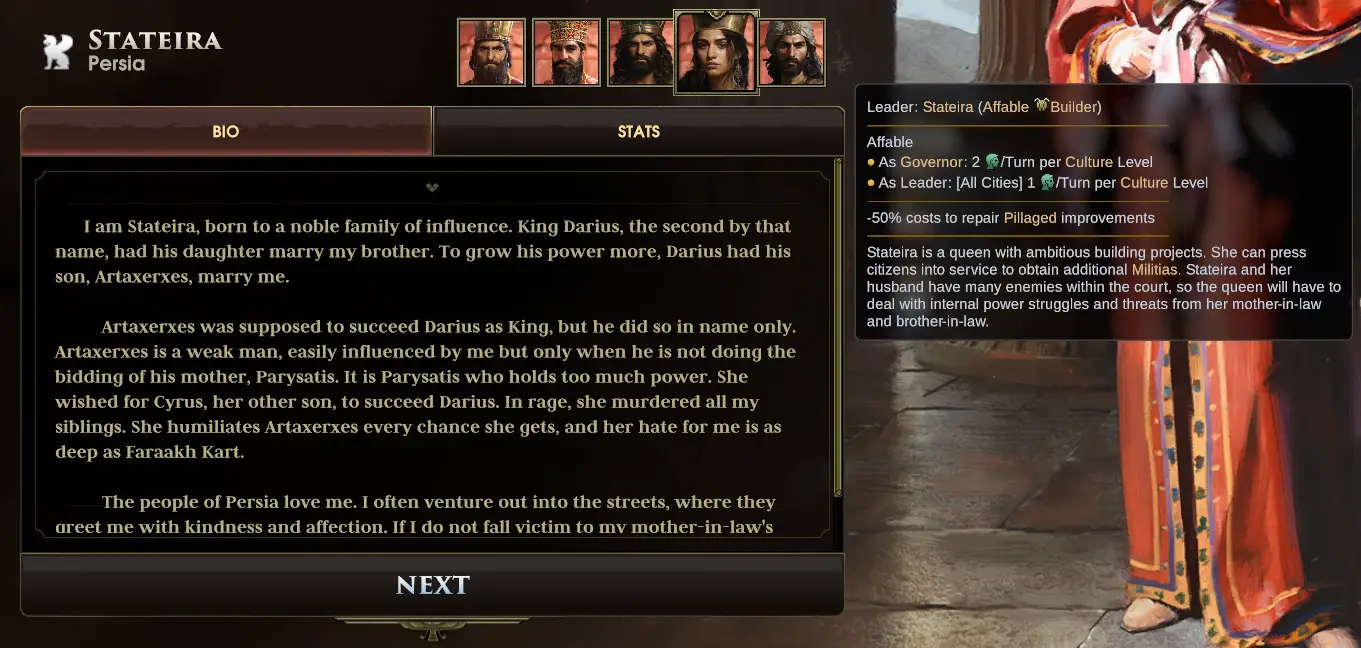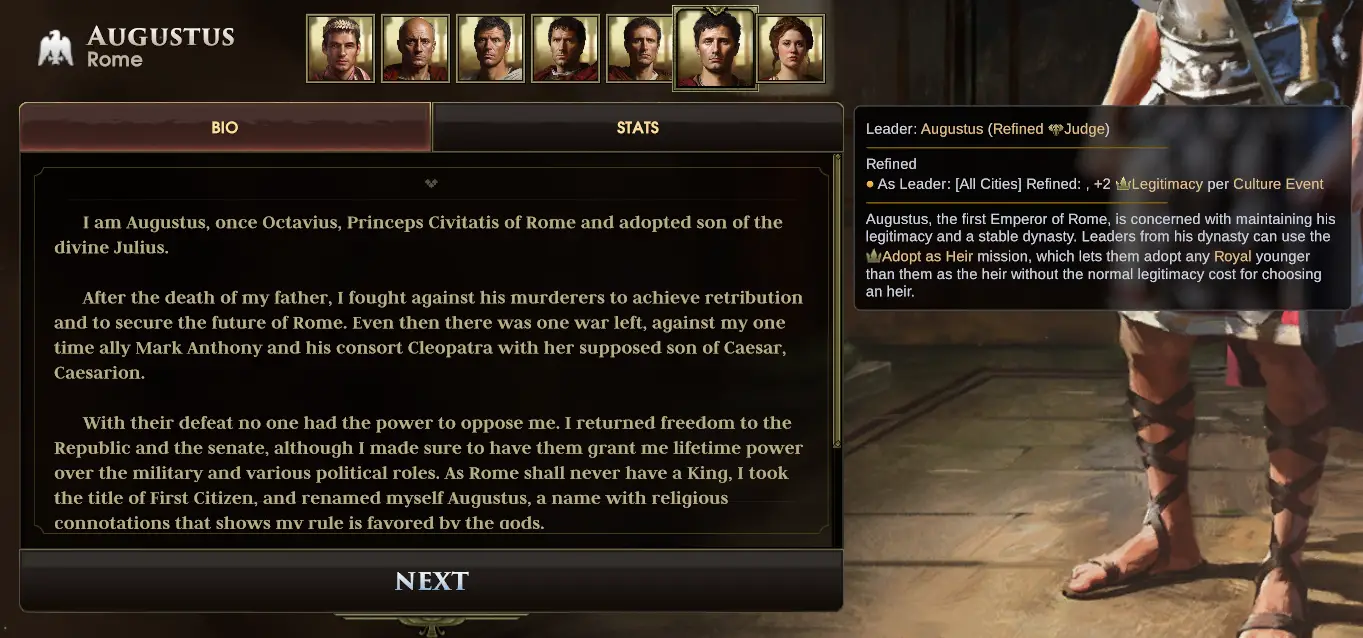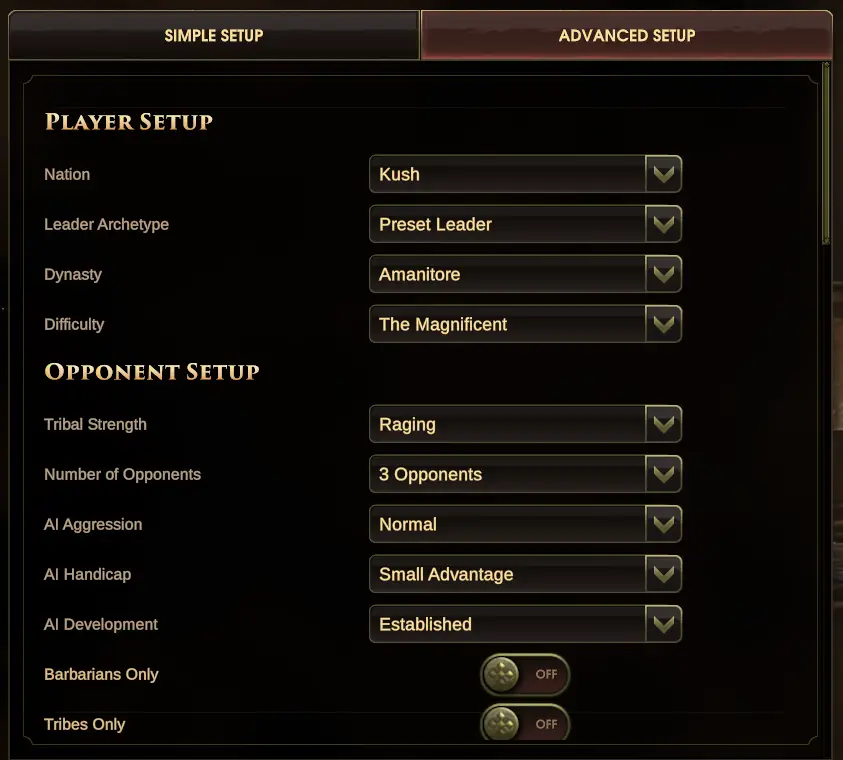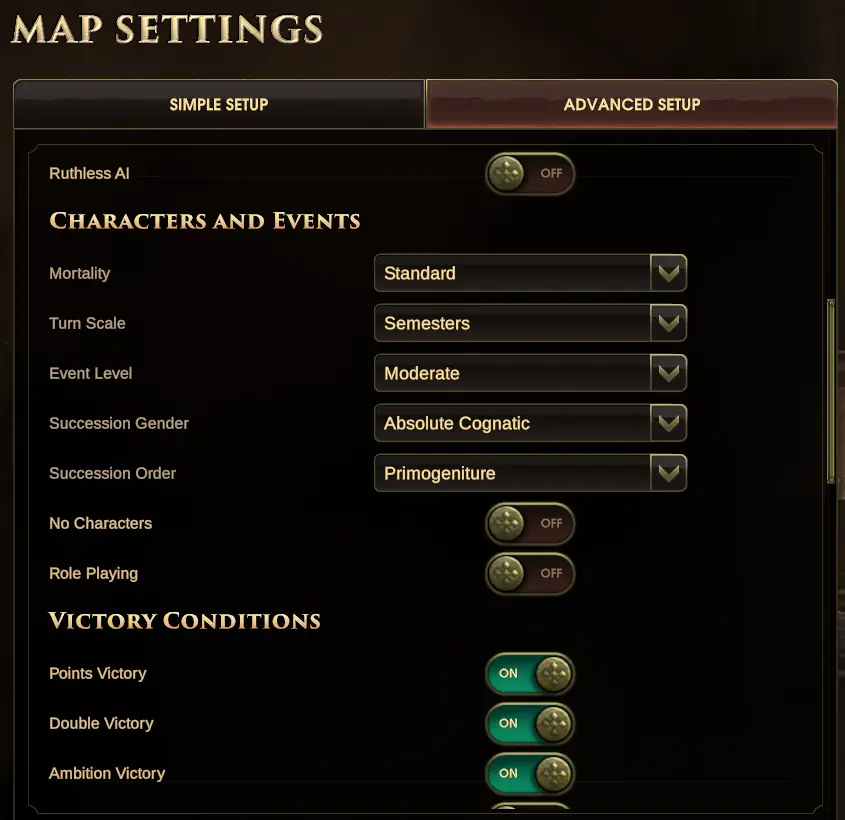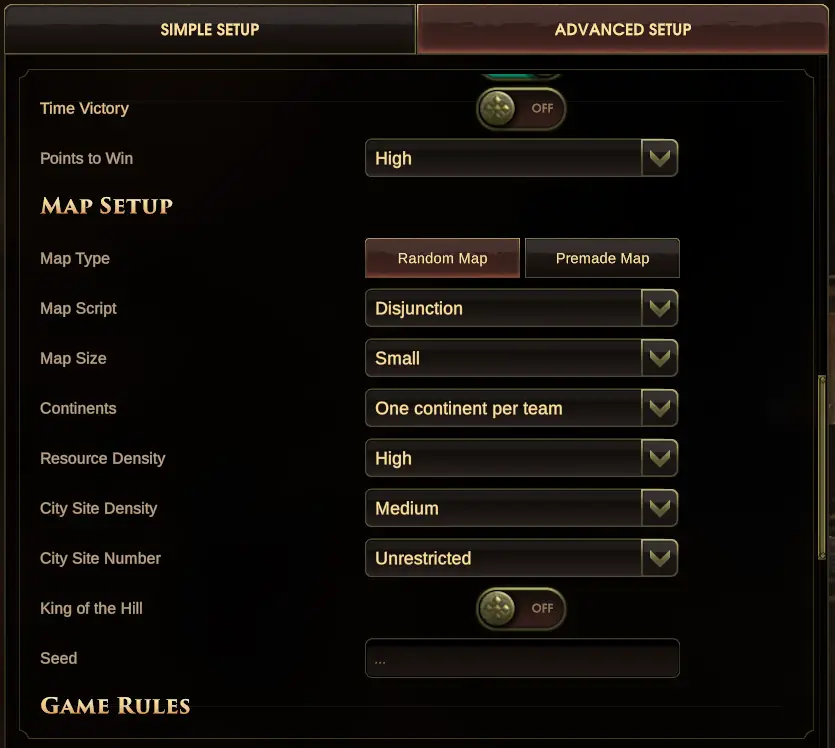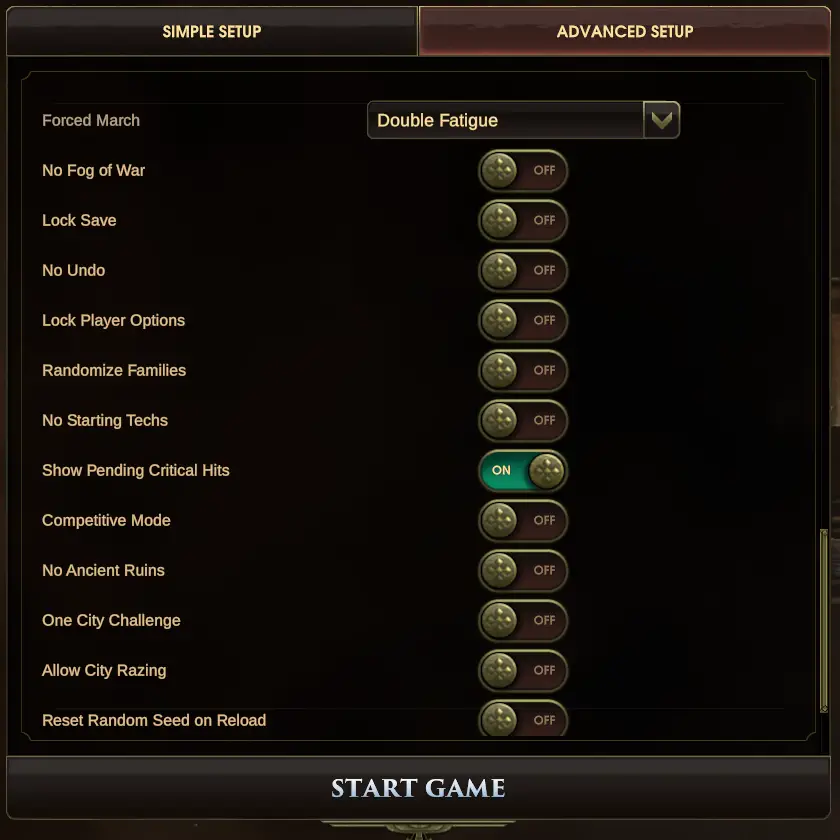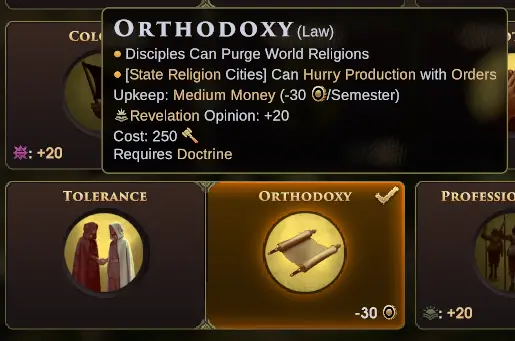This guide helps you arrange your difficulty and map settings. By doing this, you can concentrate on growing your economy without getting too involved in war or military issues in Old World.
Key Takeaways
- Opting for the Disjunction map type with one continent per player enables a peaceful gameplay style. Op deze manier, you can focus on growing your internal economy without being heavily burdened by AI aggression. The presence of a sea channel adds an extra layer of defense, making invasions more challenging for both you and the AI.
- You have the flexibility to adjust the AI Aggression and the Tribal Strength settings according to your preferences. This customization allows you to tailor the game experience to your liking.
- A shoutout to Mohawk Games for creating a game that offers such a high level of customization in difficulty and map settings. This ensures that every player can enjoy the game in their own unique way!
Invoering
Many people think that Old World focuses a lot on war and fighting. They’re right— the game was made to be exciting and full of battles. Some might say that the “best way” to play is by building a big army and conquering everything through war.
But the cool thing about Old World is that there isn’t one specific right way to play. You can change the game settings a lot to create the kind of game you want and enjoy.
Don’t want to play a game where you have to fight all the time? Geen zorgen! You can set up a game that doesn’t always lead to war. It can still be interesting and fun, and you can choose to deal with AI conflict if you feel like it.
Basisprincipes
In games, you can change some settings to make things more peaceful. Click on Advanced Setup to make your adjustments. Most likely, you’re here because you want a game that isn’t all about fighting but still gives you a fun challenge.
Nu, let’s talk about the basics. There are three important settings to look at if you want a more peaceful game.
Eerst, there’s Tribal Strength. This lets you control how active or aggressive the barbarians and tribes in the game are.
Seconde, there’s AI Aggression. At higher levels, the computer players can be really into war. Hier, you can make them less warlike. Maybe you want them strong but not always trying to attack you.
Derde, there’s Ruthless AI. If this is ON, the computer will throw everything at you to stop you from winning. Even if it’s not a smart move for them, they’ll do it just to make things harder for you. If you’re following this guide, keep this option OFF.
Emergent Pacifism
I like playing games, especially ones where I don’t have to fight a lot. I enjoy building things in the game, like cities and improvements. Old World is a game I really like because it lets me plan out how to make my cities better with cool bonuses. There are also family and event things in the game that make it fun for me.
Maar, I don’t want to ignore the military part completely. It’s fun to strategize and position my troops well. I just don’t want the computer opponents to be too strong and bother me, especially if I’m still learning. I also don’t want to risk losing all the stuff I worked hard to build in the game.
I made a plan for how I want to handle conflicts, and it has five levels. This means I have different steps, and each step is a bit more intense than the one before. I feel okay with going through these steps when dealing with larger military actions.
- Claiming New Cities: Eerst, find and settle your available city sites. These are like blank spots where you can build new cities.
- Handling Barbarians: Barbarians won’t take your cities, but they can be a little challenging. Defeat them to keep growing your territory.
- Dealing with Tribes: Tribes sometimes send attackers your way. Make some military units to defend against them. Tribes are a bit tougher than barbarians but not too scary.
- Engaging in Skirmishes: Once you’ve beaten all the nearby tribes, it’s time to step up. Fight against an AI nation, but not in a super serious way. It’s more like competing for control of a special area, like a “hill” in a game of “king of the hill.”
- Full-On War: If things get really serious, like a desperate defense in your home or an aggressive attack in the enemy’s territory, that’s full-scale war. It’s the most extreme level of conflict.
When I play games, my strategy is to not feel too much danger too quickly. I like to take small steps in my military actions, gradually getting more intense. This lets me enjoy playing with military units and focus on things like splash damage and routing. In many games, I usually stick to level #3 and might not even want to go to #4 or higher.
Can Old World be set up to let me play this way? Absolutely!
Disjunction Map
I discovered that the most effective strategy for me is to choose the Disjunction map type and assign one continent to each team. In Disjunction, the map is divided into different continents by water channels. The map’s edge is land, leaving you open to potential distant raids if you set the Tribal Strength high.
Echter, with these settings, you get your own continent to conquer, and you can avoid dealing with AI nations until you’re ready. Through my extensive experience with this map, I found that the water separation is crucial, providing a strong natural defense and discouraging invasions. Echter, it also makes it challenging to land troops in the opponent’s territory. If an AI at war with me attempts an invasion, I can counter it using my existing forces.
Als gevolg hiervan, my approach involves building up my internal economy significantly while occasionally creating military units. Op deze manier, if the need arises to mobilize them, I can do so without leaving my empire vulnerable to attacks from the sides.
Levelling Up
As you get better at these game settings, there are different ways to make it harder. You can simply make the base difficulty higher. alternatief, you can give the AI more advantages or make it develop faster. Another option is to increase the strength of the tribes.
Once you’re prepared, you can turn on the “King of the Hill” option for more challenging skirmishes with the AI! Even though you’re still playing on the Disjunction map, it’s not as easy as before, Vooral in het vroege spel, as all players start quite far from each other. There’s no longer a simple sea channel to block invasions.
Bovendien, this setting introduces an interesting hill full of resources to fight over. The battle’s direction is somewhat predetermined, so you don’t have to split your armies too much.
Best Nations
Egypt is a top choice for players who prefer a peaceful builder approach. The extra stone at the beginning of the game allows you to choose your favorite wonder. Ook, the savings from constructing improvements next to each other further encourages you to optimize your tile enhancements.
Carthage is an excellent option as it lets you hire tribal units as mercenaries (excluding raiders or barbarians). If you play without much conflict, having ample money or resources to sell can be common. In emergencies, Carthage’s ability to hire tribal units serves as a reliable backup plan. The extra money and civics, along with Dido or any Diplomat, provide additional abilities to form alliances with tribes, potentially avoiding conflicts altogether.
Forming an alliance with a tribe allows you to send a settler to their city sites and establish a new city by paying money (on any urban connected to the city site, except the one with the encampment). Once you settle all the sites of a tribal ally, their units gradually transform into raiders randomly. Gebruikelijk, the raiders convert one by one, getting attacked by remaining allied troops until very few are left. Op dat moment, you’ll need your own units to deal with the remaining units turning into raiders.
Babylonia is another classic choice for pacifists, offering science and growth benefits. The extra growth aids in getting more citizens to turn into specialists.
Persia stands out for providing extra orders for pastures and harvesting. It also offers cheaper ranged units. Building these units in a Hunters city (a family for Persia) grants them “Sentinel,” making them stronger in your territory. This is ideal for a robust defense while focusing on building up your economy.
Kush is situationally powerful but can be highly rewarding when played effectively. If you can quickly establish Polytheism, the additional benefits from shrines, combined with optimizing the Kushite Pyramids, significantly reward your builder playstyle.
Best Dynasties
To have fun with the things below, you need the Wonders & Dynasties expansions. Greece is a bit different; you’ll need Heroes of the Aegean (or Wonders & Dynasties). Ook, for Kush, you’ll need Pharaohs of the Nile.
Assyria, led by Shammuramat, boasts the remarkable ability to switch between being a Builder and a Hero. This flexibility allows you to concentrate on developing your economy first and then, when you’re prepared, switch to Hero mode for strategic invasions.
Babylonia, under Kurigalzu I, features the “Peaceful Expansionist” trait. This trait enables you to redirect the training meant for military purposes to instead purchase tiles. This allows you to maintain the Serfdom policy for the +5 orders without sacrificing it for Colonies. Hammurabi, with the special Court of the Divine King mission, deserves a special mention for making court population management easier.
Carthage, led by Hanno II, benefits from being an orator. This provides advantages when focusing on family happiness, particularly in times of peace. Hanno II can also use the Land Grants mission to enhance family opinions, gaining powerful benefits.
Egypte, guided by Khufu, enjoys a significant advantage with -50% wonder costs and the Delver ability. This makes wonder construction much more accessible and efficient.
Griekenland, specifically under Ptolemy, starts with 5 wisdom, the ability to recruit Court Scholars, and an extra shrine to build. This leader excels in a playstyle that emphasizes internal economy and science benefits.
Hatti, led by Puduhepa, combines Hatti’s existing civics strength with an eloquent diplomat. This allows you to efficiently manage the civic administration of your nation. The Syncretism project further provides orders and paganism opinion, expanding your city-building options.
Kush, with Amanitore at the helm, stands out as a favorite for a building-focused playstyle. Amanitore’s leadership grants orders for completing improvements, enabling you to build even more improvements.
Persia, led by Stateira, benefits from an affable nature that accelerates citizen acquisition for specialist roles. De “Press Into Service” ability proves valuable in times of military neglect, allowing you to summon militias to defend against raiders or other threats while reducing land repair costs by 50%.
Rome, under Augustus, earns legitimacy for each city advancing to the next culture level. This aligns well with a peaceful playstyle focused on cultural development.
My Favourite Settings
- Difficulty: Your choice
- Tribal Strength: Strong or Raging – I like to gradually increase this before making the AI stronger.
- AI Aggression: Normaal – a balanced level to keep the AI competitive but not overly aggressive.
- AI Handicap: Your choice
- AI Development: I recommend at least Fledgling or Established, increasing gradually for added challenge.
- Mortality: Standard or Lengthy – to build up strong characters for a longer-lasting game.
- Turn Scale: Semesters – for longer character lifespans, making the game a bit easier.
- Event Level: Moderate or High – to experience plenty of interesting events in a peaceful playthrough.
- Points to Win: Normal or High – choose based on your preference for game length.
- Kaart: Disjunction – Small map with 2 opponents on 3 continents for extra space.
- Resource Density: Hoog – for abundant resources to develop and improve.
- City Site Density: Medium – enough space for improvements without overcrowding.
- City Site Number: Unrestricted
- King of the Hill: OFF – consider turning ON for a slightly more challenging game.
- Forced March: Double Fatigue – for increased movement in emergencies while remaining realistic.
- Other Rules: All turned off, except Show Pending Critical Hits turned ON – for better military planning.
Too Many Resources?
If you find yourself swimming in certain resources in the game, it doesn’t mean those resources become useless. There are various ways to make good use of excess resources without engaging in war.
If you’re consistently finding abundance in everything, it might be a signal to raise the difficulty level. Echter, if you’re comfortable, here’s how you can leverage surplus resources:
- Excessive Money: Construct wonders and don’t hesitate to spend on buying necessary resources. alternatief, save the money for future use, especially if you foresee deficits in other resources.
- Exess Food: This can happen in the early to mid-game. Echter, as your cities grow culturally, maintaining legendary cities becomes costly in terms of food. You can either sell the excess food or save it for times when your production can’t keep up with cultured cities.
- Extra Iron: Build axemen and swordsmen or save it for future upgrades when you reach the relevant tech levels.
- Excess Stone: Invest in building wonders, utilizing the surplus stone effectively.
- Too Much Wood: Research your way to composite bow and produce archers, upgrading slingers into archers. This ensures a rapid consumption of excess wood.
- Abundant Orders: Prioritize different areas of your nation, adjusting policies like running Colonies instead of Serfdom. Researching Doctrine and implementing Orthodoxy allows you to use orders to rush production in your cities (provided they have Developed culture or higher and follow the state religion). In the later stages, you can even sell orders using the Coin Debasement law.
- Too Much Civics: Civics are highly versatile and can be used for various purposes. If you have an abundance of civics, consider using them to rush production in cities. This option is available for all cities at Developed culture or higher, without requiring any special laws.
- Excessive Training: If you have too much training, it can generally be converted to orders. Once converted, you can follow the suggestions mentioned above to determine how to best utilize the surplus orders in your gameplay.
While there are numerous applications for these resources, utilizing civics to rush production and converting extra training into orders are typical or “last resort” gebruikt. These options come in handy when you find yourself with an overwhelming surplus of these resources.
Dat is alles wat we vandaag hiervoor delen Old World gids. Deze handleiding is oorspronkelijk gemaakt en geschreven door Emergent. Voor het geval we er niet in slagen deze handleiding bij te werken, U kunt de laatste update vinden door dit te volgen link.
